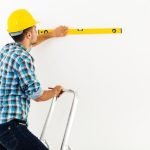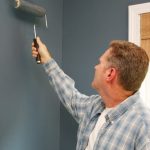Are you wondering, “How can I estimate home improvements for IRS?” Estimating home improvements is crucial for accurately reporting expenses and maximizing tax deductions. Whether you are renovating, adding energy-efficient upgrades, or making repairs, understanding the importance of estimating home improvements for IRS purposes is essential to ensure compliance and potentially reduce your tax liability.
When it comes to estimating home improvements for IRS, gathering necessary documentation and receipts is key. Keeping detailed records of all expenses related to the improvement projects will help support your claims if audited by the IRS. Identifying eligible expenses for tax deductions and calculating the cost basis of home improvements are also important steps in accurately estimating the value of your property and potential tax benefits.
In addition to maximizing deductions, certain energy-efficient home improvements may also qualify for tax credits. Understanding applicable tax credits for these upgrades can further offset the costs of your home improvement projects while promoting sustainability. Following IRS guidelines and working with a professional accountant are crucial to ensuring accurate estimations that comply with regulations and minimize potential errors in reporting.
Gathering Necessary Documents and Receipts for Home Improvements
When it comes to estimating home improvements for IRS purposes, one of the most important steps is to gather all necessary documents and receipts related to the home improvement projects. Without proper documentation, it can be challenging to accurately estimate the costs and determine eligibility for tax deductions or credits. Here are some key documents and receipts you should gather:
- Receipts from contractors or suppliers: Make sure to obtain and keep all receipts from contractors or suppliers for materials and labor costs related to the home improvements.
- Permits and approvals: If your home improvements required permits or approvals from local authorities, make sure to have these documents on hand as they may be needed for IRS purposes.
- Invoices and contracts: Keep all invoices and contracts related to the home improvement projects, including any agreements with professionals who provided services.
In addition to gathering these documents, it is also important to keep records of any payments made for the home improvements. This includes check stubs, bank statements, or credit card statements that show payments related to the projects. By keeping thorough documentation, you can provide evidence of the expenses incurred during the home improvement process.
It’s also worth noting that if you financed any part of the home improvements through a loan or mortgage, you should gather documents related to those financial transactions as well. This may include loan agreements, interest statements, and other relevant paperwork that can help establish the cost basis of the improvements.
Understanding how crucial it is to gather these necessary documents and receipts is essential in ensuring that you have accurate information when estimating home improvements for IRS purposes. This step sets a solid foundation for accurately calculating eligible expenses and potential tax deductions or credits associated with your home improvement projects.
Identifying Eligible Expenses for Tax Deductions
When it comes to estimating home improvements for IRS purposes, one of the most important aspects is identifying eligible expenses for tax deductions. This involves understanding what types of home improvements qualify for tax deductions and ensuring that you have the necessary documentation to support these expenses.
To help you identify eligible expenses for tax deductions, consider the following:
- Receipts and Invoices: Keep all receipts and invoices related to your home improvement projects. This includes materials, labor costs, and any permits or fees required for the work.
- Property Improvement vs. Repair: Understand the difference between property improvements and repairs. While improvements can be capitalized and added to the cost basis of your home, repairs may still be deductible but are not considered part of the cost basis.
- Energy-Efficient Upgrades: Certain energy-efficient home improvements may qualify for specific tax credits. These include upgrades such as solar panels, energy-efficient windows, doors, insulation, and heating/cooling systems.
It’s important to note that not all home improvements will qualify for tax deductions, so it’s crucial to familiarize yourself with the IRS guidelines and requirements. By accurately identifying eligible expenses for tax deductions, you can maximize your potential tax savings while staying compliant with IRS regulations.
In addition to identifying eligible expenses for tax deductions, homeowners should also keep in mind other potential benefits such as increased property value and energy savings when making home improvements. These factors can further enhance the overall financial impact of your renovation projects.
Calculating the Cost Basis of Home Improvements
To calculate the cost basis of your home improvements, you will need to gather all relevant documentation and receipts related to the improvement projects. This includes invoices from contractors, receipts for materials purchased, and any other relevant expenses incurred during the improvement process.
Once you have gathered all necessary documents, you can then determine the total amount spent on home improvements. This can include both material costs and labor costs if you hired professionals for the project. Keep in mind that only certain expenses may be eligible for tax deductions, so it’s important to identify which expenses qualify.
For example, if you added a new room or finished an unfinished space in your home, these costs could typically be included as part of your cost basis. However, regular maintenance or repairs may not be included in this calculation.
| Eligible Expenses | Ineligible Expenses |
|---|---|
| Additions to living space (e.g. adding a new room) | Regular maintenance and repairs |
| Renovations that increase property value | Expenses unrelated to improving property value |
Applicable Tax Credits for Energy-Efficient Home Improvements
When it comes to estimating home improvements for IRS purposes, one key aspect to consider is the availability of tax credits for energy-efficient upgrades. These tax credits can provide homeowners with significant financial benefits while also assisting in the preservation of the environment. Understanding the ins and outs of these credits is crucial for taxpayers looking to maximize their potential tax savings.
For example, the Nonbusiness Energy Property Credit allows homeowners to claim a credit for residential energy property costs related to improving the energy efficiency of their homes. This includes expenses such as insulation, windows, doors, roofs, and heating and cooling equipment. Taxpayers may be eligible to claim a credit equal to 10% of the cost of eligible property, up to specific limits.
Furthermore, there is also the Residential Energy Efficient Property Credit which offers a credit for qualified residential alternative energy equipment expenses. This encompasses items like solar hot water heaters, solar electric equipment, small wind turbines, fuel cell property, and geothermal heat pumps. The credit amount can vary depending on the type of equipment and when it was placed in service.
It’s important for homeowners to keep detailed records and receipts for all energy-efficient home improvements as they will be required to provide documentation when claiming these tax credits. By working closely with a professional accountant or tax advisor who understands how these credits apply to specific home improvements, taxpayers can ensure that they are accurately estimating their potential tax benefits.
Following IRS Guidelines for Estimating Home Improvements
Estimating home improvements for IRS purposes is essential for homeowners who want to claim tax deductions or credits. The Internal Revenue Service (IRS) has specific guidelines and requirements that must be followed when estimating the cost of home improvements for tax purposes. Failure to adhere to these guidelines can result in penalties or disqualification of your tax claims. Therefore, it is crucial to understand and follow the IRS guidelines when estimating home improvements.
Gathering Necessary Documentation
Before estimating home improvements for IRS, it is important to gather all necessary documentation and receipts. This includes invoices, receipts, and any other proof of payment for materials, labor, and other expenses related to the home improvement project. Keeping detailed records will not only ensure compliance with IRS guidelines but also provide evidence in case of an audit.
Identifying Eligible Expenses
It’s important to understand what expenses are eligible for tax deductions or credits according to IRS guidelines. Generally, expenses that add value to your home and prolong its useful life are considered eligible. This may include renovations, additions, landscaping, HVAC upgrades, and accessibility modifications for disabled individuals. Understanding the different categories of eligible expenses will help in accurately estimating the cost of home improvements for IRS purposes.
Calculating the Cost Basis
The IRS requires taxpayers to calculate the cost basis of their home improvements when estimating for tax purposes. The cost basis is used to determine the amount of capital gain or loss when selling a property. It includes the original purchase price of the property plus any qualified home improvement costs. Calculating the cost basis accurately is crucial for reporting capital gains or losses correctly on your tax return.
By adhering to these guidelines set by the IRS and seeking professional help when needed, homeowners can confidently estimate their home improvement costs for IRS purposes while maximizing their tax benefits.
Working With a Professional Accountant for Accurate Estimations
When it comes to estimating home improvements for IRS purposes, working with a professional accountant can make the process much smoother and ensure accurate estimations. A professional accountant can provide valuable expertise and guidance in understanding the complex tax laws and regulations related to home improvements. Here are some key considerations when working with a professional accountant for accurate estimations.
Expertise in Tax Laws and Regulations
Professional accountants have a deep understanding of tax laws and regulations, especially those related to home improvements. They can help homeowners navigate through the various deductions, credits, and eligibility criteria set forth by the IRS. Their expertise can ensure that homeowners maximize their tax benefits while staying compliant with all relevant regulations.
Accuracy in Estimations
One of the main benefits of working with a professional accountant is their ability to provide accurate estimations for home improvements. They can help homeowners gather all necessary documents and receipts, identify eligible expenses for tax deductions, calculate the cost basis of home improvements, and determine applicable tax credits for energy-efficient upgrades. With their attention to detail and thorough knowledge of IRS guidelines, they can ensure that estimations are precise and error-free.
Guidance on Recordkeeping
Another important aspect of working with a professional accountant is their guidance on recordkeeping. They can advise homeowners on the types of records and documentation required by the IRS for claiming home improvement expenses. This includes keeping receipts, invoices, contracts, photos of before and after improvements, as well as any other relevant documentation. Professional accountants can help establish an organized system for recordkeeping to avoid any potential issues during IRS audits.
Overall, partnering with a professional accountant is crucial in ensuring accurate estimations for home improvements for IRS purposes. Their expertise in tax laws, accuracy in estimations, and guidance on recordkeeping are invaluable resources for homeowners looking to maximize their tax benefits while complying with IRS regulations.
Tips for Keeping Accurate Records and Documentation for IRS Purposes
Keeping accurate records and documentation for IRS purposes is vital when estimating home improvements for tax deductions. It is important to maintain detailed records of all expenses related to the home improvements, including receipts, invoices, and any other relevant documents. This will help in providing proof to the IRS when claiming tax deductions for the home improvements.
One tip for keeping accurate records is to create a dedicated folder or file specifically for home improvement documentation. This can include both physical and digital copies of receipts, contracts, permits, and any other relevant paperwork. Having all the documentation organized in one place will make it easier to access and provide when needed.
In addition to maintaining receipts and invoices, it is also important to keep track of any changes or updates made during the home improvement process. This can include details of material costs, labor expenses, and any unexpected repairs or modifications that were necessary. Keeping a detailed log of these changes will ensure that you have a clear understanding of the total cost basis of the home improvements.
By following these tips for keeping accurate records and documentation, homeowners can effectively estimate their home improvements for IRS purposes. These records will not only support their tax deductions but also provide a clear overview of their eligible expenses according to IRS guidelines. Working with a professional accountant can also help ensure that all necessary documentation is properly organized and maintained for tax purposes.
Common Mistakes to Avoid When Estimating Home Improvements for IRS
In conclusion, estimating home improvements for IRS purposes is a crucial aspect of homeownership that should not be overlooked. By understanding the importance of accurate estimations, gathering necessary documents and receipts, identifying eligible expenses for tax deductions, and calculating the cost basis of home improvements, homeowners can ensure compliance with IRS guidelines and maximize their tax benefits.
One common mistake to avoid when estimating home improvements for IRS is failing to keep accurate records and documentation. This can lead to discrepancies and potential audits by the IRS, so it’s important to maintain thorough records of all expenses related to home improvements. Additionally, working with a professional accountant can help ensure that estimations are accurate and in line with IRS regulations.
Another mistake to avoid is overlooking applicable tax credits for energy-efficient home improvements. Homeowners may be eligible for various tax credits for making energy-efficient upgrades to their homes, which can result in significant tax savings. It’s important to research and take advantage of these credits when estimating the overall impact of home improvements on taxes.
By following the IRS guidelines for estimating home improvements and being diligent in record-keeping, homeowners can navigate the process effectively and minimize the risk of errors or penalties. Ultimately, accurate estimations can lead to valuable tax benefits and peace of mind for homeowners.
Frequently Asked Questions
Does the IRS Require Receipts for Home Improvements?
The IRS does not require receipts for home improvements, but it is essential to keep them for tax purposes. While they may not be mandatory, they can serve as evidence of the expenses incurred.
What Does the IRS Consider Capital Improvements on Home?
The IRS considers capital improvements on a home as those that add value to the property, prolong its useful life, or adapt it to new uses. Examples include adding a swimming pool, installing a new roof, or building an additional bedroom.
Is There a Way to Write Off Home Improvements?
There isn’t a direct way to write off home improvements on your taxes in the year you made them. However, the costs of these improvements can be added to the basis of your home, which can lower capital gains taxes when you sell it in the future.

I’m thrilled to have you here as a part of the Remodeling Top community. This is where my journey as an architect and remodeling enthusiast intersects with your passion for transforming houses into dream homes.





